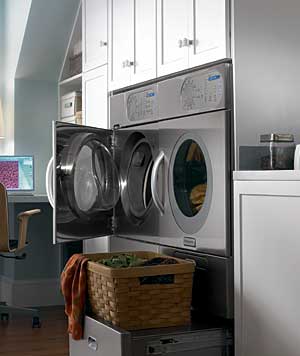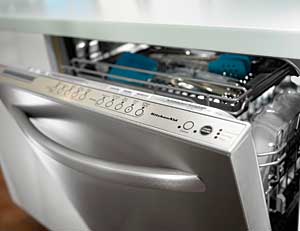Universal Design: Integrating Innovative Products and Spatial Design
It's not hard to see the relationship with universal design. Industrial designers, in particular, see ergonomics as a major part of universal design. Again, product design, like architecture, has no legal requirements for accessibility, but industrial designers do recognize the market need and opportunity to focus on the preferences of users. And the changing demographics of the aging population have established a clear call for universal design.
As one industry spokesman suggested there are three primary drivers of universal design in the manufacturing of appliances: ergonomics, visual acuity, and cognitive recognition.
 |
| Some laundry pedestals will incorporate a shelf to hold laundry baskets, allowing the user to move clothing articles more easily from washer to dryer while reducing bending. |
Ergonomics, as stated above, examines the relationship between man and machine, making changes where possible for healthier and more satisfying work conditions. For instance, the ergonomic chair that improves our posture and reduces stress comes to mind, but ergonomics can be an important consideration when designing door handles and levers or the placement of an oven door or the height of a dishwasher.
Visual acuity, the second factor, addresses the needs of those vision ranges from slight impairment brought on by aging to individuals with severe difficult seeing. Design changes to accommodate them can also be welcomed by those without disabilities. Placement and size of lettering is important as is assess. For example, a dishwasher is available for which the position of the door is perfectly balanced and can be opened to any angle to bring the controls to an optimal viewing position.
 |
| A balanced dishwasher door with top-mounted controls can be positioned at any angle for ease of use. |
Cognitive recognition can be described as our ability to adapt to new technology. We like the old ways of doing things, and often need help to make a technological leap. For example, a home cooking enthusiast may aspire to be more like a professional chef, which would mean expanding cooking options as much as possible at home. Yet, the instructions for the new convection oven may seem confusing or complicated. In this case, the appliance features an easy convection button that makes the cognitive leap for the consumers so they can bake as they have always done so in the past; a microchip makes the adjustment to convention technology.









